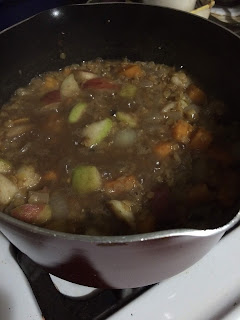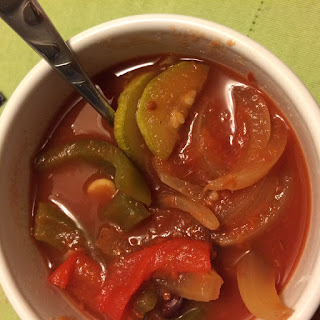When I first learned how to make my own version of wontons, I was super excited. I grew up loving wonton soup, but I gave it up when I stopped eating animal products. It only took me a few months being vegan before I learned to make my own wontons with tempeh and the pre-made wrappers they sell at grocery stores.
When I could no longer eat corn, I had to make my own wonton wrappers. They weren't awful, but I didn't have any clue how to adapt once I had to stop eating gluten and wheat flour. This was my first attempt at making gluten-free wontons. I also had to swap out the tempeh because I'm doing a soy elimnation trial (suspected allergy). I replaced the tempeh with walnuts and mushrooms.
This recipe is more a cautionary tale than a recipe. The end result was delicious, but it wasn't without hiccups. If you're making this, please consider the amounts below to be suggestions rather than exact measurements. If you can eat gluten and corn, you can skip the worst steps and use store-bought wonton wrappers, just check the ingredients to make sure you're getting ones without eggs. This is not a fast or simple recipe, but it's worth the effort.
This makes more wontons than you'll probably want to eat at once. Freeze the rest in a single layer on a cookie sheet, then transfer to storage containers. Pull a few out whenever you want a fast bowl of soup.
I should note that this is a totally non-authentic recipe. It is completely based on Americanized foods. I recommend that for the actual stuffing and sealing of the wontons, you search online for real directions rather than just going off my free form photographs.
When you see it in the bowl, it's easy to forget how much work it was!
There's the filling! The psyllium husk makes it clump together better,
but it's optional and just for texture.
The psyllium husk in the dough is not optional. That's what makes it knead-able and roll-able
like a dough with gluten. If you're cooking gluten free, it's worth buying to always
have some on hand. You can add it to many recipes to make them easier to work with.
I am not a master wonton filler. You can see mine all turned out different shapes.
They all taste good, though!
Filling:
1 cup walnuts
8 oz sliced mushrooms
1/2 small red onion
1-2 cloves garlic
2 inches ginger, peeled and sliced
1 Tbsp psyllium husk (optional)
Chop the first five ingredients in a food chopper or processor. Then stir in the psyllium (if using).
Dough:
1 1/2 cups garbanzo flour
1 cup millet flour
2/3 cup arrowroot
2 Tbsp psyllium
1 cup water
1. Mix all ingredients. Knead in more flour as needed.
2. Roll out between two sheets of parchment very liberally dusted with flour. Cut into pieces for filling.
3. Put about a tablespoon of filling on a square of dough. Dip your finger in water and dampen the edges of the square, then fold the dough over and pinch to seal.
4. Freeze until ready to use or cook right away. To cook, I put a thin layer of water in my saute pan, set the wontons in, covered, and let the water simmer until the wontons were cooked (the dough has an obvious change in visual texture and color when cooked). You can search online for better methods of steaming, too.
Broth:
2 cups salt-free vegetable broth
2 cups water
2 tsp miso
sprinkle of parsley
I used the vegetable broth recipe from the How Not to Die cookbook, but you can use whatever broth recipe you like. Heat the broth with water and miso over low heat. Don't boil after adding the miso.
Put a few wontons in a bowl. Ladle the hot broth on top. Garnish with a sprinkle of parsley (or, to be more authentic, you could use green onions, which I do not like and so do not use).















































